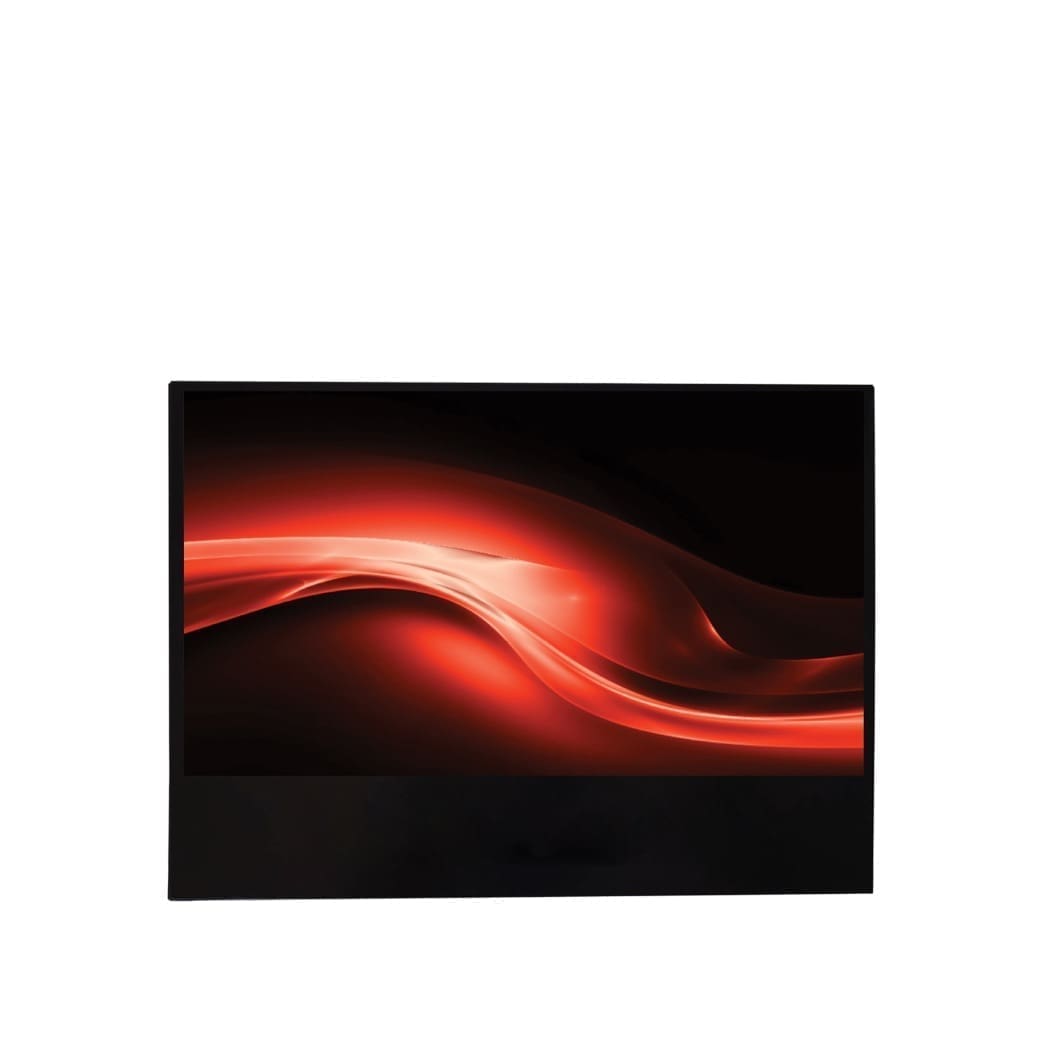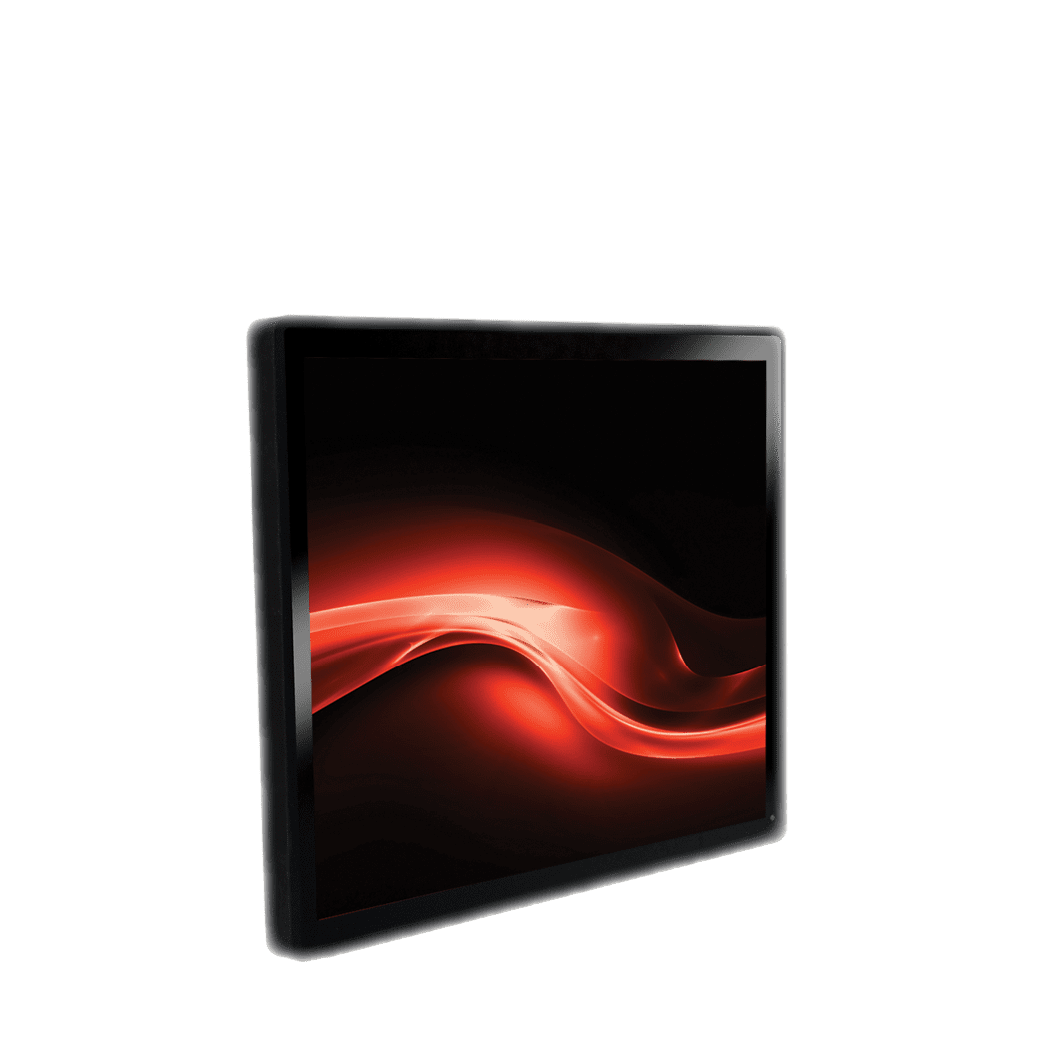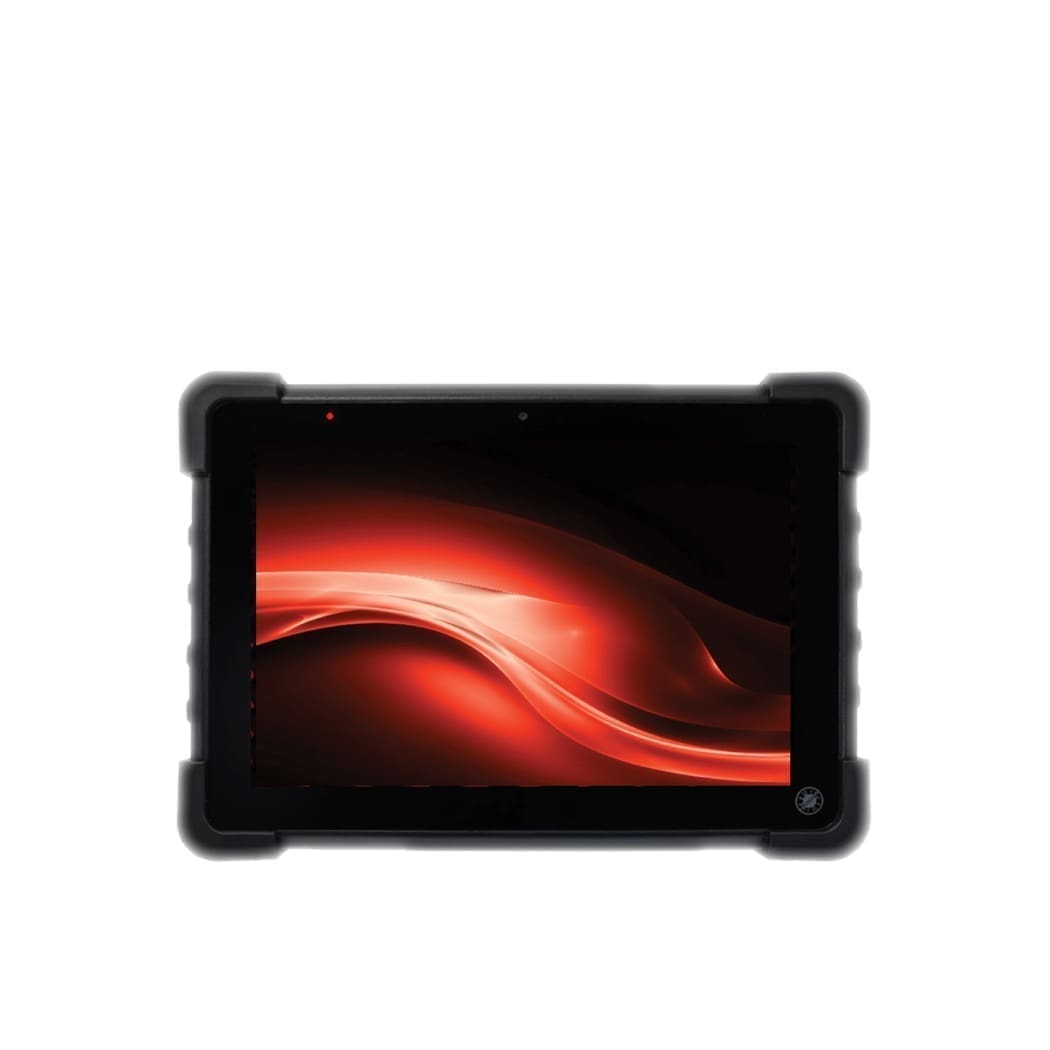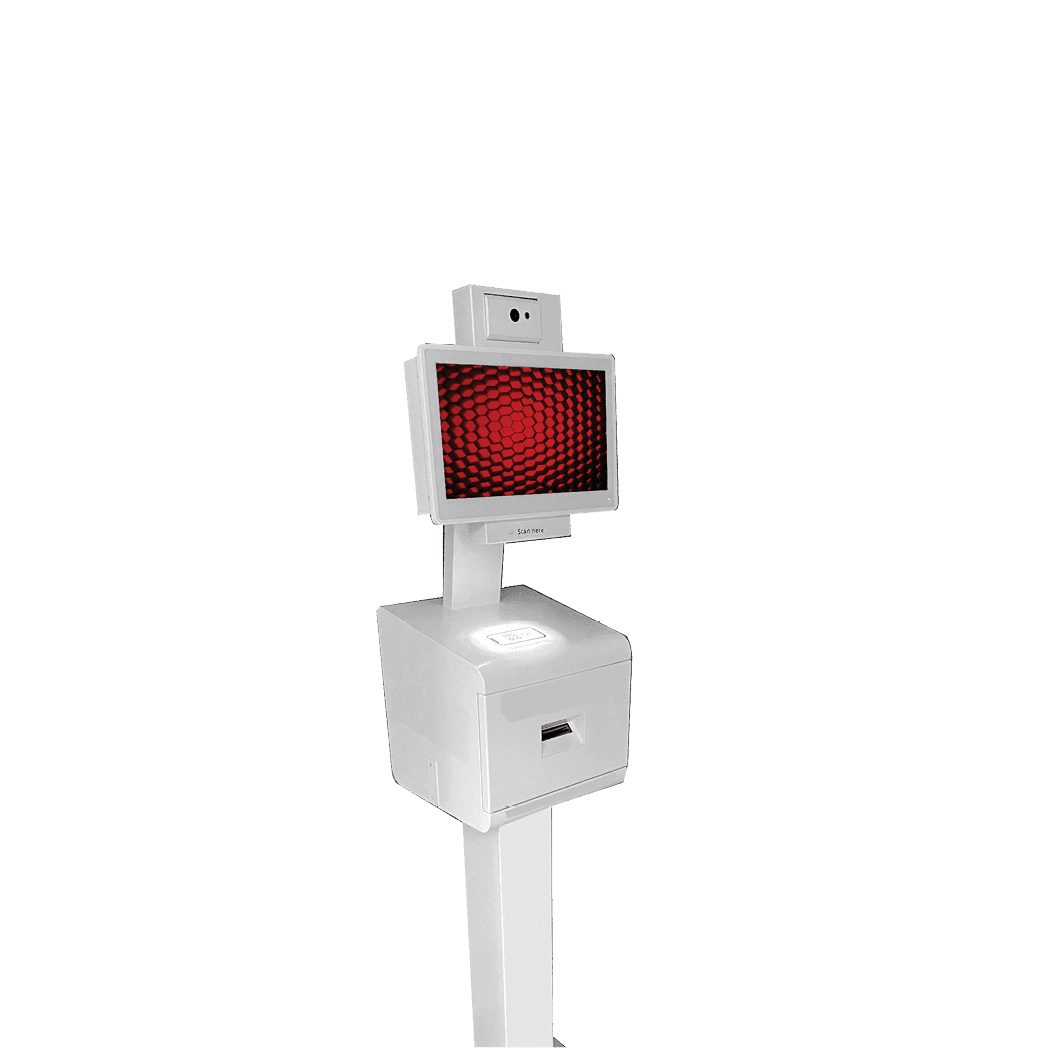Medical Precision
Medical Grade Monitors, Displays & PC Solutions
Faytech’s medical grade monitors and PC touch screen display solutions are engineered to meet the rigorous demands of healthcare environments, offering unparalleled image clarity, precision touch control, and reliable 24/7 operation. Embrace the future of medical technology with our certified displays—contact faytech today to enhance the efficiency and care quality in your healthcare facility.
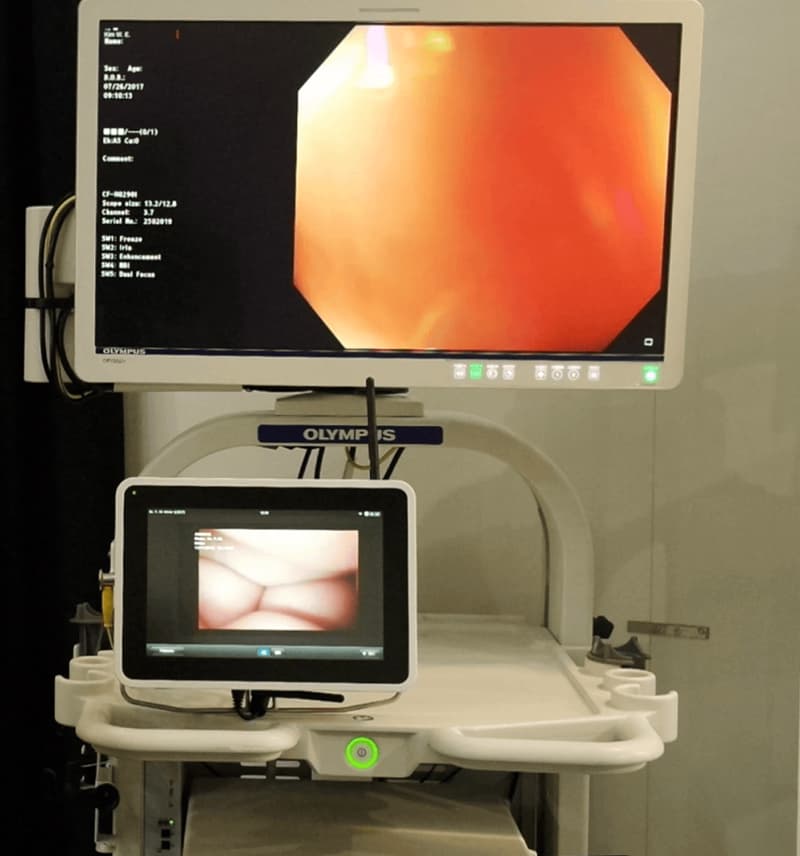
Healthcare Interactivity
Touch Screen Medical Monitors for Hospitals & Clinics
Faytech’s Interactive Medical Monitor Solutions are at the forefront of enhancing patient care and hospital efficiency. Designed with the rigorous demands of the healthcare industry in mind, these monitors boast high-definition clarity and responsive touch technology, allowing for swift and accurate data entry, patient monitoring, and image analysis. They serve as vital tools for healthcare professionals, enabling better patient engagement and streamlined workflows within hospitals and clinics.
Furthermore, faytech’s solutions are built to ensure ease of sanitization, a critical feature in medical settings, while their durability guarantees long-term reliability. With customizable options to fit various medical applications, from digital charting to telemedicine, these interactive monitors integrate seamlessly into the medical infrastructure. Contact us today for custom options.
Medical Tech
Medical Touch
Screen Monitor
Solutions
Experience a transformative hospital and clinic environment with faytech’s medical-grade touchscreen PCs, specifically crafted for healthcare settings. These cutting-edge screens offer intuitive interfaces and impeccable performance, allowing medical professionals to efficiently access patient data, control medical imaging, and manage treatments.
By integrating faytech’s touchscreens into your medical setting, you can enhance the patient care experience, streamline workflow, and facilitate interactive patient education. Discover how faytech’s Interactive Medical Monitor Solutions can redefine your healthcare facility’s operations—contact us today to explore our advanced medical technology solutions.
Transform your hospital or clinic workflow with faytech’s medical-grade touchscreen monitors, designed to streamline patient care processes and optimize healthcare provider interactions and treatment administration.
Experience seamless hospital and clinic operations with faytech’s medical-grade touchscreen PCs, specifically engineered to enhance productivity and facilitate data-driven patient care and health record management.
Harness the power of faytech’s medical-grade touchscreen tablets to bring portability and real-time patient management to your hospital and clinic services.
Explore faytech’s specialty touchscreen solutions, custom-designed to address unique challenges in hospitals and clinics, enhancing healthcare delivery and patient experience.
The Clear-Bond Advantage
faytech is the #1 provider of large format optical bonding services globally, and has its own proprietary optical bonding formula, CLEAR-BOND. CLEAR-BOND uses a silicone-based liquid adhesive that has been specifically created to provide the best optical bonding performance on the market, even in the most extreme environment
Improved Readability
Optical bonding can significantly enhance the visibility of digital signage displays by reducing the amount of reflection and glare.
Increased Touch Accuracy
Enhanced Durability
Optical bonding can make the display more resistant to physical impact, scratches, and other types of damage, increasing the longevity of the device.
Better Weather Resistance
Improved Image Quality
Improved Aesthetics
Medical Efficiency
SMART Solutions for Hospitals & Clinics
Faytech’s SMART Solutions for Hospitals & Clinics are revolutionizing the way healthcare providers interact with technology and patients. With a focus on smart, intuitive design, these touchscreen devices are tailored to meet the high stakes of the medical environment, enabling clinicians to access and update patient records, monitor vital signs, and manage treatment plans with ease and precision. These robust, medical-grade screens not only withstand the rigors of daily use in healthcare settings but also support the critical need for hygiene with easy-to-clean surfaces. Faytech’s commitment to innovative healthcare solutions supports medical staff in delivering the highest level of patient care while optimizing operational workflows.



More Information
Upgrade Your Hospital with Monitors that are Medical Grade
Medical grade monitors, such as the digital mammography display, are vital for accurate medical imaging and diagnostics. These monitors offer a high contrast ratio, resulting in crisper images. The new generation IPS LCD technology further enhances the quality of medical imaging. These advanced medical displays, such as the digital mammography display and the new generation IPS LCD, ensure compliance with industry standards and regulations. They guarantee crisper images for critical diagnostic reading, providing the highest level of image quality. With their high contrast and grayscale capabilities, medical grade monitors provide precise visual representation, especially in digital mammography. The new generation IPS LCD technology ensures crisper images for accurate diagnostic reading. Additionally, the backlight LCD enhances the overall viewing experience.
The quality, brightness, and contrast of these digital mammography displays and new generation IPS LCD monitors are carefully calibrated to meet the specific needs of medical professionals. The backlight LCD technology ensures crisper images for accurate diagnosis. Equipped with high contrast ratio, LED backlight, and a wide range of luminance levels, the digital mammography display offers exceptional performance and accuracy. The availability of high contrast ratio and color on some digital mammography models further enhances the diagnostic practice. Plus, the luminance is improved.
We will delve into the features of digital mammography, including its diagnostic reading capabilities and high contrast ratio, that make it an indispensable tool for healthcare providers. Additionally, digital mammography offers energy saving benefits. Join us as we uncover the long-lasting impact of digital mammography monitors with LED backlight on the field of medicine, specifically in high contrast diagnostic reading.
Benefits and Features of Medical Grade Monitors
High Resolution Displays for Detailed Image Interpretation
Medical grade monitors with high resolution displays enable healthcare professionals to interpret medical images in great detail, including digital mammography. These monitors utilize LED backlight technology to enhance contrast and luminance for accurate image interpretation. With a higher pixel density and led backlight, these monitors can showcase intricate anatomical structures, fine textures, and subtle changes in tissue with exceptional clarity and contrast. This is particularly beneficial for digital mammography, as it allows for accurate detection of abnormalities and improved visualization of breast tissue. The luminance of the monitors further enhances the quality of the images, ensuring optimal diagnostic accuracy. This level of detail, with high contrast and luminance, is crucial for accurate diagnosis and treatment planning using LED backlight technology.
The increased resolution and luminance allows physicians to detect even the smallest abnormalities or lesions that may be missed on lower-quality displays. For example, when examining an X-ray or MRI scan, medical grade monitors enable doctors to zoom in on specific areas without sacrificing image quality. This helps them make more precise assessments and identify potential health issues that might have otherwise gone unnoticed.
Enhanced Color Accuracy for Accurate Diagnosis
One of the key features of medical grade monitors is their enhanced color accuracy. These monitors are specifically designed to reproduce colors accurately, ensuring that healthcare professionals can make accurate diagnoses based on visual cues within medical images.
Color accuracy is especially critical in areas such as dermatology or pathology where subtle variations in color can indicate different conditions or diseases. By providing true-to-life colors, medical grade monitors enable clinicians to identify skin abnormalities or cellular changes with greater precision.
Furthermore, accurate color representation is essential when viewing radiological images like CT scans or ultrasound results. Different shades of gray can convey important information about tissue density or blood flow patterns. Medical grade monitors ensure that these nuances are faithfully reproduced, allowing radiologists to make accurate interpretations and diagnoses.
Advanced Calibration Capabilities for Consistent Performance
To maintain consistent performance over time, medical grade monitors come equipped with advanced calibration capabilities. These features allow healthcare facilities to calibrate their monitors regularly according to industry standards and guidelines.
Calibration ensures that the monitor’s brightness, contrast ratio, gamma correction, and color reproduction remain accurate throughout its lifespan. Regular calibration guarantees that healthcare professionals view images consistently and make reliable assessments, regardless of when the monitor was last calibrated.
Moreover, medical grade monitors often have built-in sensors that can automatically adjust the display settings to compensate for ambient lighting conditions. This feature ensures optimal image quality in different environments, eliminating any potential distractions or inaccuracies caused by variations in lighting.
Why Medical Grade Monitors Matter
Medical grade monitors are critical in the field of healthcare for a variety of reasons. They play a vital role in detecting subtle abnormalities in medical images, reducing misdiagnosis, and improving treatment outcomes. These monitors are essential tools for radiologists, surgeons, and other healthcare professionals who rely on accurate and precise visual representation of medical data.
Critical in detecting subtle abnormalities in medical images
Medical grade monitors are specifically designed to meet stringent standards for image quality and accuracy. This makes them highly effective in identifying even the most minute details or abnormalities that may be present in medical images such as X-rays, CT scans, MRIs, or ultrasounds. The high resolution and color accuracy of these monitors allow healthcare professionals to analyze images with greater precision and make more informed diagnoses.
With non-medical grade monitors, there is a risk of missing important details due to inadequate resolution or inaccurate color reproduction. This can lead to misinterpretation of images and potentially result in misdiagnosis or delayed treatment.
Reduce misdiagnosis and improve treatment outcomes
Accurate diagnosis is crucial for providing appropriate treatment to patients. Medical grade monitors significantly reduce the chances of misdiagnosis by ensuring that healthcare professionals have access to clear and reliable visuals. These monitors offer consistent brightness levels across the entire screen, minimizing variations that could affect interpretation.
By using medical grade monitors, doctors can confidently identify abnormalities such as tumors, fractures, or other conditions that require immediate attention. This leads to timely interventions and improved patient outcomes.
Essential tools for radiologists, surgeons, and healthcare professionals
Radiologists heavily rely on medical grade monitors when interpreting diagnostic imaging studies like X-rays or mammograms. These specialized displays provide the necessary level of detail required for accurate diagnosis.
Surgeons also benefit from using medical grade monitors during surgical procedures. The high-quality visualization helps them navigate complex anatomy with precision while performing minimally invasive surgeries or intricate procedures.
Moreover, healthcare professionals across various specialties, including dermatology, cardiology, and pathology, rely on medical grade monitors to assess and analyze medical images specific to their respective fields. These monitors ensure that the visual information they rely on is accurate and reliable.
Medical touch screen monitor solutions are designed to be more sturdy
Resistant to damage from frequent cleaning and disinfection
Medical touch screen monitor solutions are specifically designed to withstand the rigorous demands of healthcare environments. One key feature that sets these monitors apart is their resistance to damage from frequent cleaning and disinfection. In healthcare settings, maintaining a high level of cleanliness is paramount, and regular cleaning procedures involve the use of strong disinfectants. Medical grade monitors are built with materials that can withstand exposure to these chemicals without compromising their functionality or longevity.
Durable construction withstands rigorous healthcare environments
The construction of medical touch screen monitors is engineered to be durable and robust, making them ideal for demanding healthcare environments. These monitors are built using high-quality components and undergo stringent testing to ensure they can withstand the daily wear and tear in hospitals, clinics, and other medical facilities. They are designed to endure accidental impacts, vibrations, and even extreme temperature conditions that may occur in critical care units or operating rooms.
Touchscreens enable intuitive interaction without compromising hygiene
One of the standout features of medical touch screen monitor solutions is their ability to provide intuitive interaction while maintaining strict hygiene standards. Traditional monitors require physical buttons or controls for operation, which can harbor bacteria and make it challenging to maintain a sterile environment. With touchscreens, healthcare professionals can navigate through menus, enter data, zoom in on images, and perform various tasks using simple gestures directly on the screen.
Medical grade touch screens employ advanced technologies such as new generation IPS LCD panels with LED backlighting. This combination offers high resolution, crisper images with improved clarity and stability compared to traditional displays. The LED backlight technology not only enhances image quality but also provides energy-saving benefits by consuming less power than older display technologies.
In addition to their durability and touchscreen capabilities, medical grade monitors often come equipped with other features that support efficient workflow in healthcare settings. For example:
-
Desktop stands that allow for easy adjustment of the monitor’s position, ensuring optimal viewing angles for healthcare professionals.
-
Support for multiple connectivity options, enabling seamless integration with various medical devices and systems.
-
Built-in calibration tools that ensure accurate and consistent image reproduction, especially crucial in fields like radiology where precise visualization is essential.
Medical touch screen monitors offer a range of benefits to healthcare professionals. Their sturdy construction, resistance to damage from cleaning procedures, and intuitive touchscreens make them an invaluable tool in delivering quality patient care. By investing in these specialized monitors, medical facilities can enhance efficiency, improve accuracy in diagnoses and treatments, and ultimately provide better outcomes for their patients.
Why a medical monitor is necessary in clinics and operating rooms
Real-time Visualization Enhances Precision
Real-time visualization is a crucial aspect of surgical procedures, as it enhances precision and accuracy. Medical monitors provide surgeons with clear and detailed images, allowing them to visualize the patient’s anatomy in real-time. This enables them to make precise incisions, navigate delicate structures, and perform complex procedures with confidence. By having a medical monitor in the operating room, surgeons can closely monitor their actions and make adjustments on the fly, ensuring optimal outcomes for patients.
Efficient Monitoring of Vital Signs and Patient Data
In clinics and operating rooms, efficient monitoring of vital signs and patient data is paramount. Medical monitors play a vital role in this process by providing healthcare professionals with immediate access to critical information at the point of care. These monitors display vital signs such as heart rate, blood pressure, oxygen saturation levels, and respiratory rate in real-time. This allows medical staff to quickly identify any abnormalities or changes that may require immediate attention. With all the necessary data readily available on a medical monitor, healthcare professionals can make informed decisions promptly.
Seamless Integration with Other Medical Devices
Medical monitors are designed to seamlessly integrate with other medical devices commonly used in clinics and operating rooms. This integration ensures that all relevant information from various devices is displayed on a single screen for easy viewing and analysis. For example, when connected to an anesthesia machine or ventilator, the medical monitor can display parameters such as tidal volume, peak inspiratory pressure, and end-tidal carbon dioxide levels alongside vital signs. This comprehensive view helps healthcare professionals assess the overall condition of the patient more effectively.
Medical Monitors: Pros
-
Enhance precision during surgical procedures.
-
Provide real-time access to vital signs.
-
Facilitate seamless integration with other devices.
Medical Monitors: Cons
-
Can be expensive to purchase initially.
-
Require regular maintenance and calibration.
Medical displays and PCs for Hospitals
In hospitals, reliable hardware is essential to meet the demanding needs of healthcare professionals. Medical displays and PCs are specifically designed to provide accurate image rendering and streamline workflow through seamless integration with hospital systems.
Reliable Hardware for Demanding Healthcare Needs
Medical displays and PCs are built with robust hardware that can withstand the rigorous environment of hospitals. These devices are engineered to operate continuously without compromising performance or reliability. They undergo stringent testing procedures to ensure they can withstand frequent use, vibrations, and temperature variations commonly found in healthcare settings.
DICOM Compliance for Accurate Image Rendering
One of the key features of medical displays is their DICOM compliance. DICOM (Digital Imaging and Communications in Medicine) is a standard that ensures consistent image quality across different medical imaging systems. Medical displays with DICOM compliance provide accurate grayscale rendering, allowing healthcare professionals to accurately diagnose and interpret medical images such as X-rays, CT scans, and MRIs.
Streamlined Workflow through Seamless Integration
Medical displays and PCs are designed to seamlessly integrate with hospital systems, enabling a streamlined workflow for healthcare professionals. These devices can be easily connected to Picture Archiving and Communication Systems (PACS), Electronic Medical Record (EMR) systems, and other hospital information systems. This integration allows for quick access to patient data, medical images, test results, and other critical information needed for diagnosis and treatment.
Enhanced Productivity with Medical Carts
Medical carts equipped with medical displays offer additional flexibility in healthcare settings. These carts allow healthcare professionals to have mobile access to patient records, medical images, and other important information while on the move within the hospital premises. The integrated display provides a convenient platform for reviewing patient data or conducting consultations at the bedside.
How to Choose the Right Medical Grade Touchscreens
Consider display size, resolution, and aspect ratio based on specific requirements
When selecting medical grade touchscreens, it is crucial to consider the display size, resolution, and aspect ratio that align with your specific requirements. The display size should be large enough to provide clear visibility of medical images and data without straining the eyes. A larger screen allows for better viewing of intricate details in radiology or surgical procedures. On the other hand, a smaller screen may be more suitable for mobile applications or limited workspace.
The resolution of the touchscreen determines the level of detail and clarity in the displayed content. Higher resolutions such as 4K or Ultra HD offer sharper images and text, enhancing accuracy in medical diagnoses and reducing eye fatigue. However, it’s essential to balance resolution with compatibility with existing software systems and hardware capabilities.
The aspect ratio refers to the proportional relationship between width and height on the screen. Common aspect ratios include 16:9 (widescreen) or 4:3 (standard). The choice depends on your specific needs; widescreen displays are ideal for multitasking or displaying multiple windows simultaneously, while standard screens may be more suitable for certain medical applications.
Pros:
-
Larger display sizes enable better visualization of medical images.
-
Higher resolutions provide sharper image quality.
-
Different aspect ratios cater to different working preferences.
Cons:
-
Larger displays may require more physical space.
-
Higher resolutions can strain system resources.
-
Different aspect ratios may not be compatible with all software systems.
Evaluate compatibility with existing software systems
Before making a purchase decision, it is crucial to evaluate the compatibility of medical grade touchscreens with existing software systems used in healthcare facilities. Compatibility ensures seamless integration between hardware and software components, minimizing potential issues such as lagging performance or limited functionality.
Consider whether the touchscreen supports operating systems commonly used in healthcare settings like Windows or Linux. Check for compatibility with Electronic Medical Record (EMR) software, Picture Archiving and Communication Systems (PACS), and other medical imaging applications. Ensuring compatibility will enable efficient workflow management, accurate data entry, and seamless communication between different systems.
Pros:
-
Compatibility with existing software systems ensures smooth integration.
-
Efficient workflow management and accurate data entry are facilitated.
-
Seamless communication between different systems is achieved.
Cons:
-
Incompatibility may lead to lagging performance or limited functionality.
-
Additional costs may be incurred if software updates or replacements are necessary.
-
Lack of compatibility can disrupt workflow and hinder productivity.
Assess ergonomics, adjustability, and ease of use for user comfort
Ergonomics plays a vital role in the selection of medical grade touchscreens as healthcare professionals spend long hours interacting with these devices. Evaluate the ergonomic design features such as adjustable stands or mounts that allow users to position the screen at an optimal height and angle. This reduces strain on the neck, back, and wrists, promoting better posture and minimizing the risk of musculoskeletal injuries.
Ease of use is another essential factor to consider. Touchscreens should have intuitive interfaces with user-friendly navigation menus and controls. Look for features like multi-touch capability for easy zooming or scrolling through medical images. Consider touch sensitivity to ensure accurate input recognition even when wearing gloves commonly used in healthcare settings.
Pros:
-
Ergonomic design features promote user comfort and reduce the risk of injuries.
-
Intuitive interfaces enhance ease of use.
-
Multi-touch capability enables seamless interaction with medical images.
Cons:
-
Lack of ergonomic design can lead to discomfort or injuries.
-
Complex interfaces may require additional training for users.
-
Insufficient touch sensitivity can result in inaccurate input recognition.
Conclusion: The Importance of Medical Grade Monitors & PCs
In conclusion, the significance of medical grade monitors and PCs cannot be overstated in healthcare settings. These specialized devices offer numerous benefits and features that are specifically designed to meet the unique demands of medical professionals. From enhanced image quality and accuracy to increased durability and infection control measures, medical grade monitors provide a reliable solution for critical tasks in clinics, operating rooms, and hospitals.
Investing in medical grade monitors not only ensures accurate diagnosis and treatment but also contributes to patient safety. These monitors are built with sturdy materials that can withstand frequent cleaning and disinfection protocols, reducing the risk of cross-contamination. Their high-resolution displays enable healthcare providers to view intricate details with precision, enabling better decision-making during procedures. By choosing the right medical grade touchscreens, healthcare facilities can enhance efficiency, improve workflow, and ultimately deliver superior patient care.
FAQs
What is the difference between regular monitors and medical grade monitors?
Medical grade monitors are specifically designed for use in healthcare settings and undergo rigorous testing to meet industry standards. They offer features like higher resolution, better color accuracy, wider viewing angles, anti-glare coatings, and compatibility with various imaging modalities that regular consumer-grade monitors lack.
Can I use consumer-grade monitors in a healthcare setting?
While it may be tempting to use consumer-grade monitors due to their lower cost, they are not recommended for critical healthcare applications. Consumer-grade displays may not meet the necessary standards for image quality or durability required in medical environments.
Are medical grade monitors more expensive?
Yes, medical grade monitors tend to be more expensive compared to regular consumer-grade displays due to their specialized features and certifications. However, considering their crucial role in accurate diagnosis and patient safety, investing in high-quality medical grade equipment is essential.
How often should medical grade monitors be cleaned?
Medical grade monitors should be cleaned regularly following the manufacturer’s guidelines and facility protocols. Depending on the level of usage and infection control policies, daily or periodic cleaning with appropriate disinfectants is recommended to maintain a hygienic environment.
Can medical grade monitors be used in telemedicine applications?
Absolutely! Medical grade monitors are ideal for telemedicine applications as they offer superior image quality, allowing healthcare providers to accurately assess patients remotely. The high-resolution displays ensure that no critical details are missed during virtual consultations, contributing to effective remote healthcare delivery.
Interested in Touch Screens or Digital Signage for Medical Use?
Explore the future of healthcare with faytech’s cutting-edge touchscreen solutions tailored for hospitals and clinics. Reach out to us today to discover how our technology can transform patient care and streamline clinical operations.

